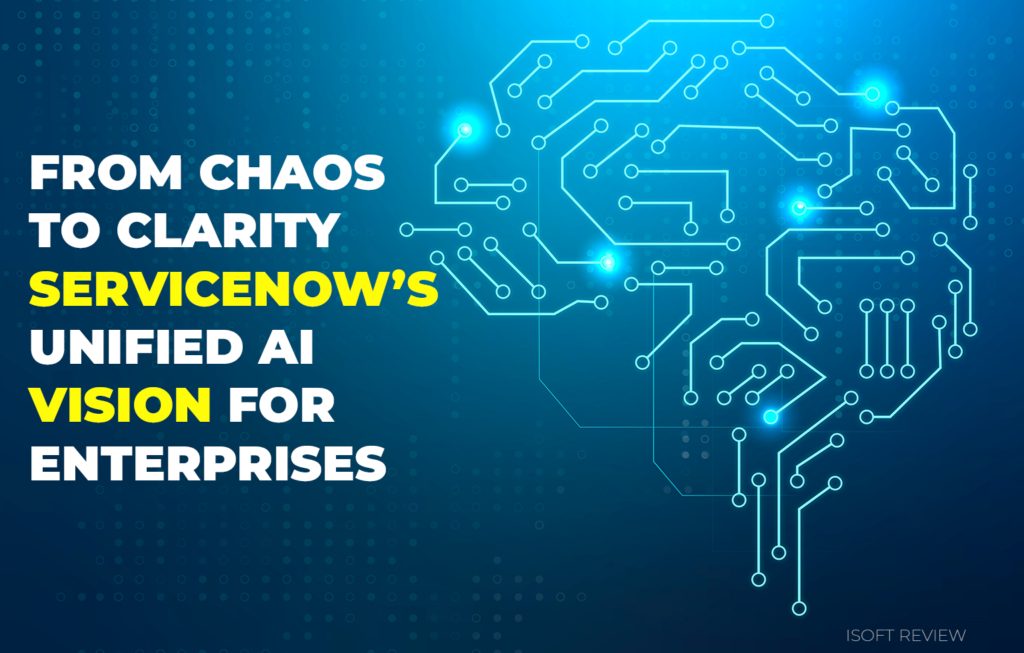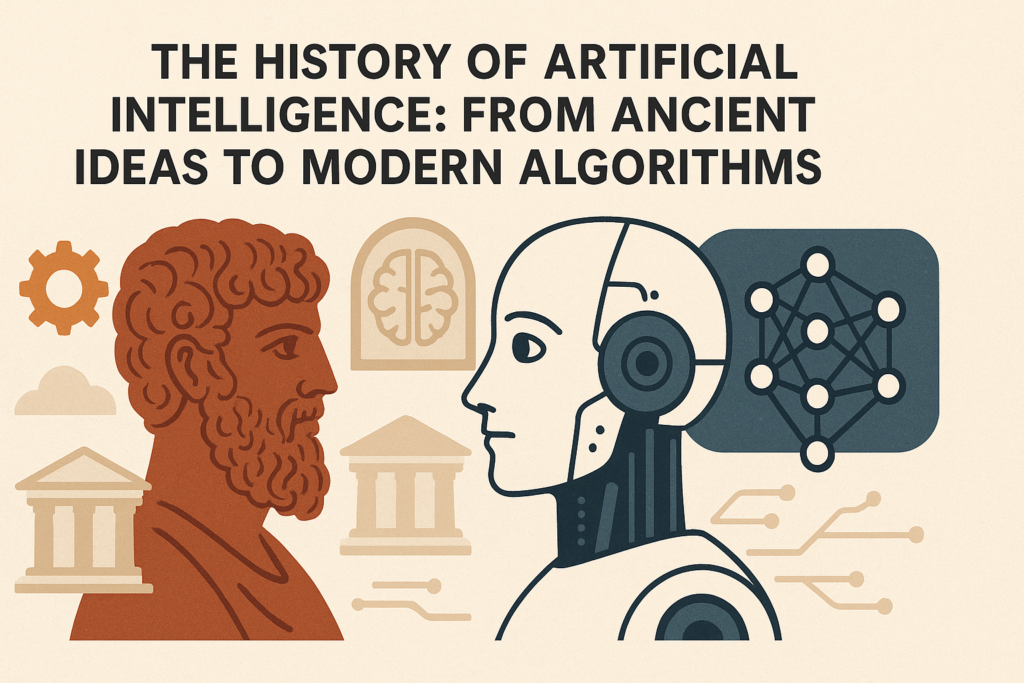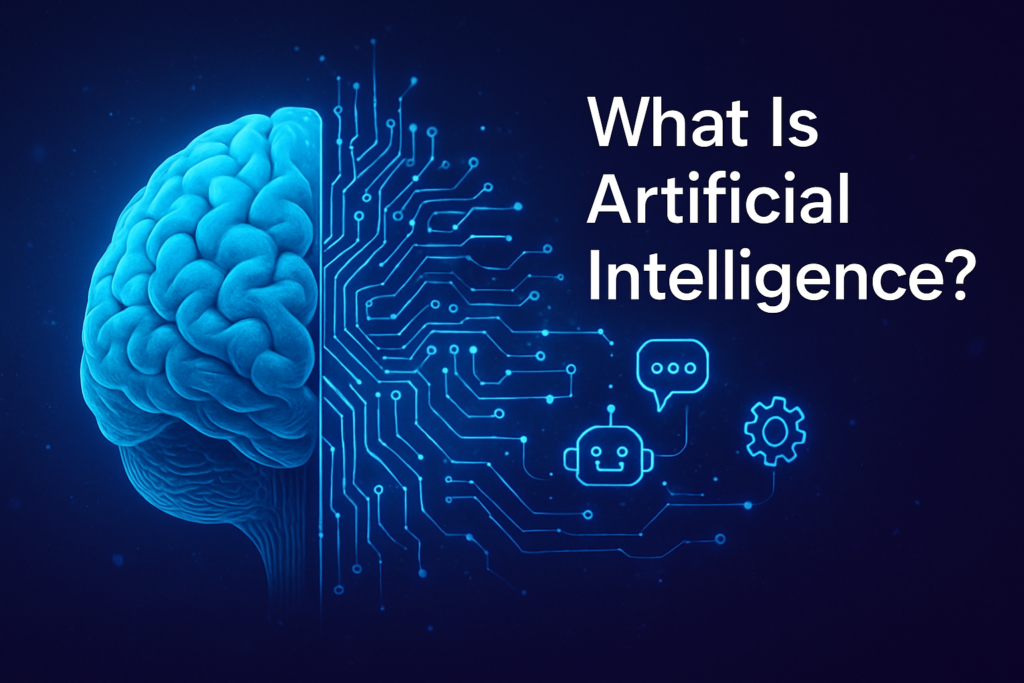
From Chaos to Clarity: ServiceNow’s Unified AI Vision for Enterprises
The Hidden Cost of Complexity: Why Enterprise AI Needs Reinvention
In large enterprises today, digital transformation often breeds something unexpected: operational chaos. As organizations grow, they accumulate tools, apps, and workflows many of which don’t speak to each other. The result? Fragmented experiences, duplicated efforts, and invisible bottlenecks that bleed time and revenue.
According to a 2024 McKinsey report, over 35% of enterprise productivity loss can be traced back to inefficient cross-functional workflows. Employees spend hours navigating between siloed systems instead of solving business-critical problems.
This is the exact kind of complexity that ServiceNow aims to untangle not with more isolated tools, but through a unified, context-aware AI layer that connects the entire enterprise.
ServiceNow’s Strategic Bet: A Unified AI Layer for the Enterprise Stack
Most enterprise platforms still treat AI as a patch, a feature added to individual tools to boost automation or response time. But ServiceNow is betting on something much deeper: an AI layer that runs across the entire enterprise, not just within isolated apps.
At the center of this strategy is Now Assist, a unified intelligence engine designed to connect IT, HR, customer service, and operations without fragmenting the experience across separate bots or plugins.
What makes Now Assist different is how it blends three critical layers of intelligence:
- Natural Language Processing (NLP)
Enables employees to interact with systems in plain language asking, triggering, or navigating without technical commands. - Generative AI Capabilities
Summarizes support cases, recommends next actions, drafts knowledge responses, or completes workflows using real-time data cues. - Cross-Workflow Automation
Seamlessly connects tasks between departments eliminating manual handoffs and siloed actions.
The result isn’t just faster service desk resolution or better HR response. It’s a fundamental shift in enterprise logic: where decisions are no longer delayed by system gaps, and data flows without friction.
While many tools have promised “AI for business,” ServiceNow’s approach feels less like another layer and more like a unifying core. It’s a move from tactical automation to strategic orchestration and it could redefine how enterprises operate under pressure.
How It Works: From Manual Workflows to Autonomous Assistance
To understand the power of ServiceNow’s unified AI, imagine a familiar enterprise friction point: an employee needs to submit a facilities request. Normally, that triggers a cascade of manual tasks navigating different portals, routing the issue to multiple teams, following up for status, and hoping nothing gets lost in between.
With Now Assist, that entire process compresses into a single interaction. The employee starts a conversation in a chatbot or portal. From there, the AI:
- Understands the request’s intent, even if it’s vague or non-standard
- Routes it across the right departments (facilities, IT, admin)
- Triggers workflows automatically without human triage
- Provides real-time updates, reducing uncertainty and internal back-and-forth
This is not just automation, it’s autonomous assistance driven by context and design.
Here are some high-impact use cases already being streamlined:
- IT Support
Automatically generates ticket summaries, pulls in relevant knowledge articles, and escalates issues when patterns indicate urgency. - HR Service Requests
Answers employee policy questions, kickstarts onboarding flows, or updates records without waiting for HR staff intervention. - Customer Service
Equips agents with full case summaries and recommended actions before they even open the ticket, saving precious response time.
What connects all these examples is clarity: one AI engine working across fragmented workflows to deliver faster outcomes and measurable ROI. In practice, this means fewer delays, less confusion, and more time spent on value not navigation.
Why This Approach Stands Out: From Fragmentation to Flow
In many organizations, AI is still fragmented. Each department installs its own chatbot, its own automation plugin, its own “smart” tool. But these systems rarely talk to each other. What results is a digital patchwork: intelligence scattered across silos, unable to collaborate or share context.
ServiceNow’s approach rewrites that logic. Instead of treating AI as a departmental add-on, it embeds Now Assist directly into the platform’s core workflow engine, the same layer that powers cross-functional processes from IT to HR to CX.
That integration unlocks three critical advantages:
- A Consistent User Experience Across Functions
Employees and teams interact with a single, familiar AI layer no matter which department they’re in. This reduces friction and training time. - Data-Aware, Context-Driven Decisions
With unified knowledge graphs and system-wide context, the AI doesn’t operate in isolation; it understands the who, what, and why behind every interaction. - Shared Intelligence That Adapts Across Teams
An action taken in HR (like a promotion or location change) can automatically update workflows in operations, security, or IT without duplicate input.
What ServiceNow delivers isn’t just smarter automation, it’s intelligent orchestration across the enterprise. It shifts AI from a feature to a foundation, creating operational flow where other platforms still see disconnection.
In an enterprise world drowning in complexity, this level of alignment isn’t just impressive, it’s necessary.
The Competitive Landscape: Where ServiceNow Fits in the AI Race
ServiceNow isn’t the only player investing in AI, but its unified model positions it differently from rivals.
Competitor | Approach | Key Limitation |
Salesforce Einstein | App-specific AI (CRM-focused) | Limited workflow scope outside sales/marketing |
Microsoft Copilot | Productivity layer over Office ecosystem | Strong in documentation, weak in structured workflow |
Oracle AI | ERP-specific modules | Complex deployments, less agile |
Where others specialize in department-specific intelligence, ServiceNow’s edge is cross-functional alignment, a differentiator that enterprise leaders value more as their operations become increasingly interconnected.
FAQs – What Enterprise Leaders Are Asking
What exactly does “unified AI” mean in this context?
It refers to AI that works across business units sharing data, language models, and workflow logic instead of being confined to isolated tools.
Is ServiceNow building its own AI models?
- No. ServiceNow partners with providers like Microsoft and OpenAI but custom-trains models using enterprise-specific data and workflows.
Will this replace human decision-making?
- No, it’s designed to enhance human productivity, not replace it. Think of it as a co-pilot that handles the repetitive tasks and surfaces insights faster.
How customizable is it across industries?
- Highly customizable. ServiceNow’s AI layer adapts to vertical-specific use cases, from healthcare compliance to manufacturing operations.
How does this AI layer interact with existing tools like Slack or SAP?
- It integrates through ServiceNow’s platform connectors and APIs, allowing real-time workflow execution from external systems.
Conclusion: Unified AI as the New Enterprise Operating System
The era of fragmented enterprise tools is coming to a close. As operational complexity grows, businesses are no longer looking for more software; they’re looking for software that connects everything.
With its unified AI vision, ServiceNow isn’t just introducing another productivity tool. It’s building what could become the central nervous system of the modern enterprise, intelligent, responsive, and built for scale.
In a world where every second counts, and clarity is the new currency, ServiceNow’s AI architecture offers something rare: a real shot at enterprise simplicity.


